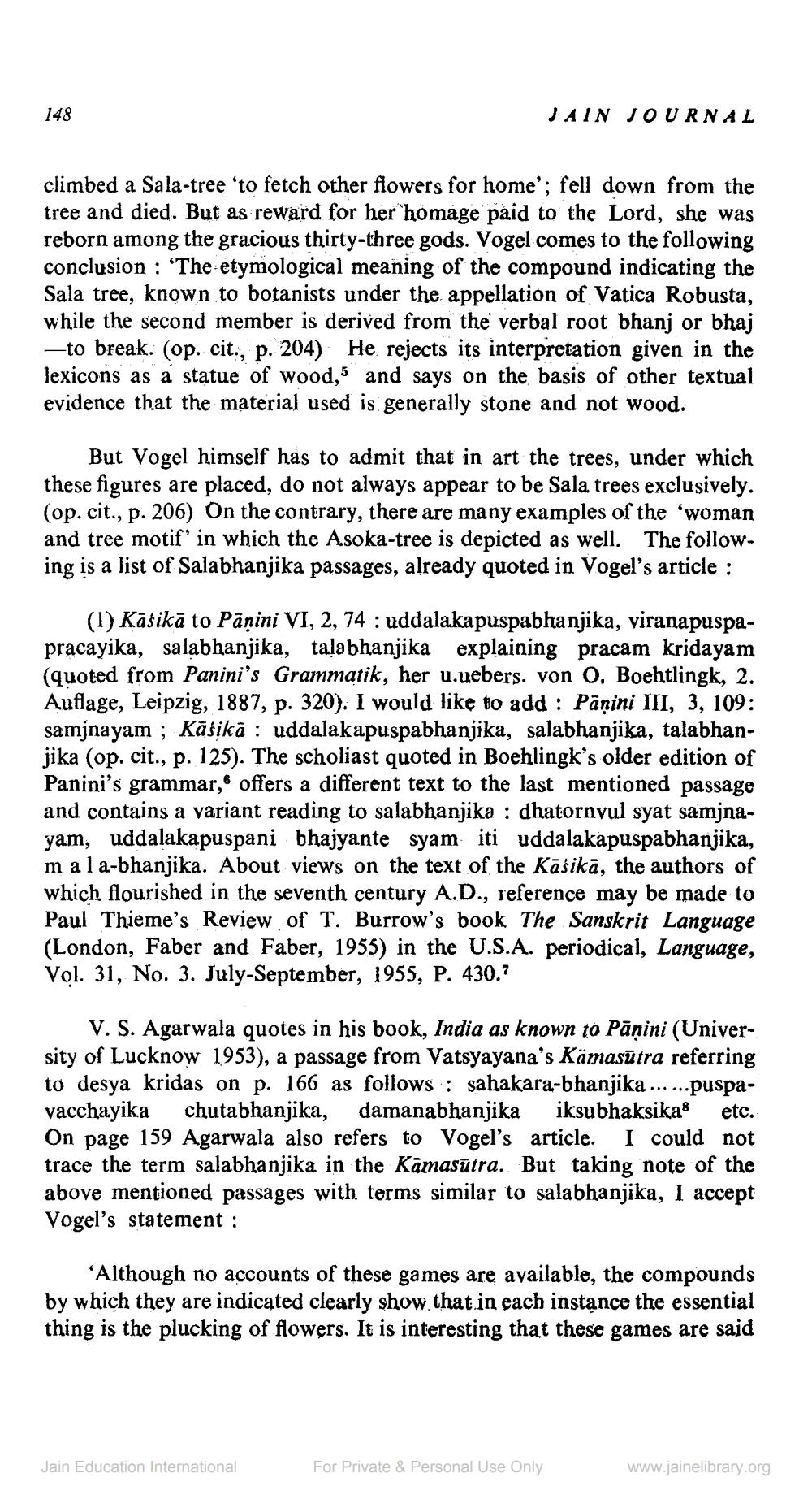________________
148
climbed a Sala-tree 'to fetch other flowers for home'; fell down from the tree and died. But as reward for her homage paid to the Lord, she was reborn among the gracious thirty-three gods. Vogel comes to the following conclusion: "The etymological meaning of the compound indicating the Sala tree, known to botanists under the appellation of Vatica Robusta, while the second member is derived from the verbal root bhanj or bhaj -to break. (op. cit., p. 204) He rejects its interpretation given in the lexicons as a statue of wood,5 and says on the basis of other textual evidence that the material used is generally stone and not wood.
JAIN JOURNAL
But Vogel himself has to admit that in art the trees, under which these figures are placed, do not always appear to be Sala trees exclusively. (op. cit., p. 206) On the contrary, there are many examples of the 'woman and tree motif' in which the Asoka-tree is depicted as well. The following is a list of Salabhanjika passages, already quoted in Vogel's article :
(1) Kāšikā to Pāṇini VI, 2, 74 : uddalakapuspabhanjika, viranapuspapracayika, salabhanjika, talabhanjika explaining pracam kridayam (quoted from Panini's Grammatik, her u.uebers. von O. Boehtlingk, 2. Auflage, Leipzig, 1887, p. 320). I would like to add : Panini III, 3, 109: samjnayam; Kāśikā : uddalakapuspabhanjika, salabhanjika, talabhanjika (op. cit., p. 125). The scholiast quoted in Boehlingk's older edition of Panini's grammar, offers a different text to the last mentioned passage and contains a variant reading to salabhanjika dhatornvul syat samjnayam, uddalakapuspani bhajyante syam iti uddalakapuspabhanjika, m a la-bhanjika. About views on the text of the Kasika, the authors of which flourished in the seventh century A.D., reference may be made to Paul Thieme's Review of T. Burrow's book The Sanskrit Language (London, Faber and Faber, 1955) in the U.S.A. periodical, Language, Vol. 31, No. 3. July-September, 1955, P. 430.7
V. S. Agarwala quotes in his book, India as known to Pāṇini (University of Lucknow 1953), a passage from Vatsyayana's Kämasūtra referring to desya kridas on p. 166 as follows: sahakara-bhanjika......puspavacchayika chutabhanjika, damanabhanjika iksubhaksikas etc. On page 159 Agarwala also refers to Vogel's article. I could not trace the term salabhanjika in the Kamasutra. But taking note of the above mentioned passages with terms similar to salabhanjika, I accept Vogel's statement :
'Although no accounts of these games are available, the compounds by which they are indicated clearly show that in each instance the essential thing is the plucking of flowers. It is interesting that these games are said
Jain Education International
For Private & Personal Use Only
www.jainelibrary.org




